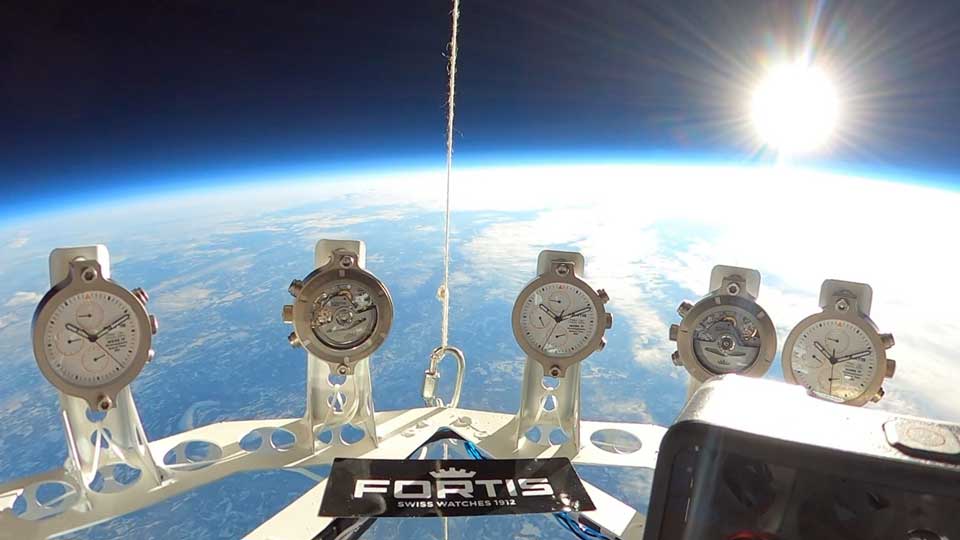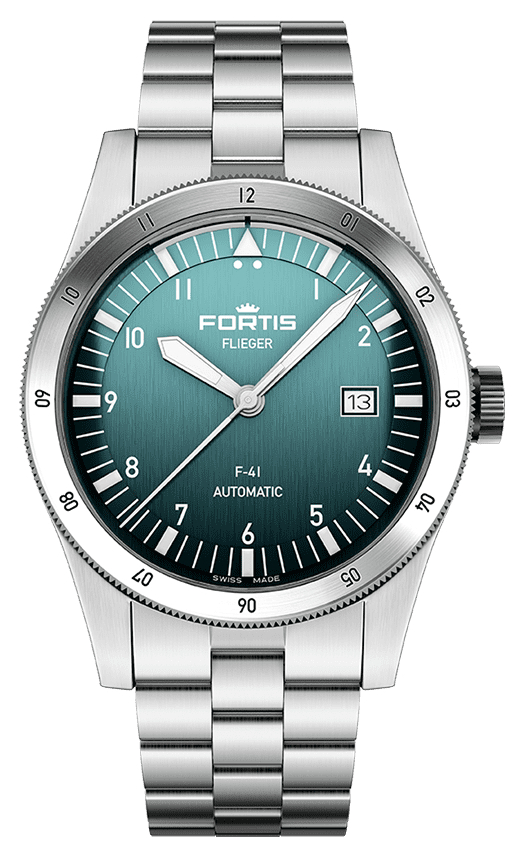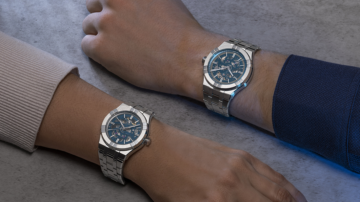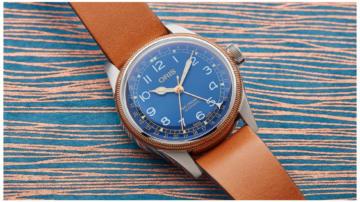Here at First Class Watches, we are excited to welcome Swiss-based watchmaker Fortis to our website! Although younger than many of its rivals at just 111 years old, Fortis is a brand of many milestones. In fact, its luxurious watches are closely intertwined with historical turning points in the horological, aeronautic and astronautic industries. Recently launching its new watches into the stratosphere on a gondola driven by a stratospheric balloon, the brand still aims to push the limits of watchmaking. Today, we will be introducing Fortis to First Class Watches by exploring snapshots of its rich history. Additionally, at the end, we will give some of our own Fortis watch recommendations.
The World’s First Automatic Watch
Founded by Walter Vogt in 1912, Fortis had a strong start in the horological industry. Demand was already high early on, and in 1917 Fortis had to add another wing to its factory just to keep up with demand.
However, the brand’s successful streak was only just beginning. Just twelve years after its founding, Fortis partnered with John Harwood to manufacture the world’s first automatic wristwatch. Harwood was an English watch repairman who, in 1922, famously developed the automatic movement as we know it today. Patenting the movement in 1922, Harwood joined forces with Fortis to mass-produce watches with this new self-winding mechanism.
Debuted at Baselworld and released in 1926, the namesake ‘Harwood’ watch has gone down in history. Shortly after, brands such as Rolex began developing their own automatic watches. Indeed, it goes without saying that the automatic wristwatch is still the choice of many even just under 100 years later.
In 1929, it was the Harwood that accompanied the first around-the-world trip in a zeppelin. It was worn by British journalist Lady Grace Drummond-Hay during the flight, which took place in several instalments between August 1st and September 4th 1929.
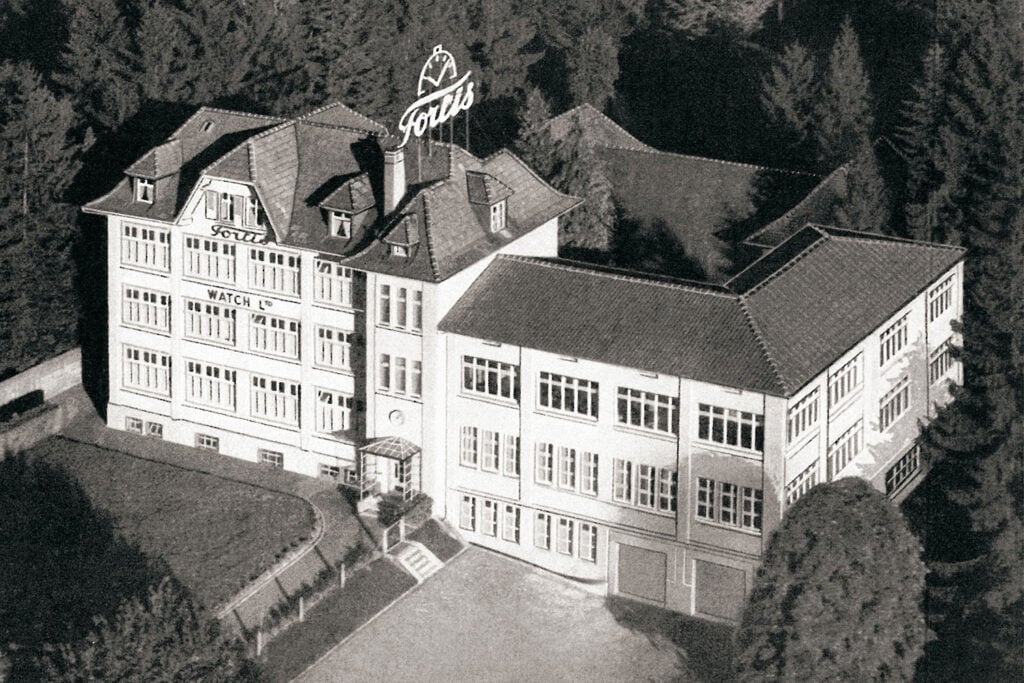
The Sixties, Seventies, and Space
Fortis continued to go from strength to strength. It celebrated its 25th anniversary in 1937 by releasing its first chronographs and released one of the world’s first waterproof watches in 1940. However, the next era for Fortis truly began in the early 1960s.
In 1961, the enthusiasm surrounding the prospect of space travel made its way to Rolf Vogt, son of founder Walter. So much so that Vogt Junior ends up travelling all the way to the United States. There, he meets with the then-three-year-old NASA. For the occasion, he brings along the newly-designed Spacematic ARs which he presented to the Gemini Space Program astronauts.
This bold gesture sets the tone for the sixties, seventies, and beyond for Fortis. In the late 1960s, the brand began to experiment with the growing trend of the ‘fashion’ watch. Characterised by its daring colour range, the Fortis Flipper was the first Swiss-made plastic watch. Priced reasonably with 200 metres of water resistance and an interchangeable strap, the Flippers set the precedent for many brands to come.
Fortis and ROSCOSMOS
Although it marked its interest in space early on, it wasn’t until 1992 that Fortis became involved with space missions. In the early 90s, former German cigarette brand ‘West’ initiated its ‘West in Space’ marketing campaign. Commissioning artist Andora for the job, the intention behind the campaign was to launch an artist-painted Russian Proton rocket into space. Fortis joined the campaign as the official timekeeper, which led to them catching the eye of ROSCOSMOS.
ROSCOSMOS, the Russian space agency, was looking for a reliable and capable official timekeeper for its missions. In 1994, Fortis watches were put through rigorous testing at the Yuri Gagarin Cosmonauts Training facilities. To thoroughly evaluate Fortis’s eligibility, this assessment period lasted six months. However, after passing these trials with flying colours, Fortis became the official timekeeper of the Cosmonauts. This was a longstanding partnership that lasted until 2019.
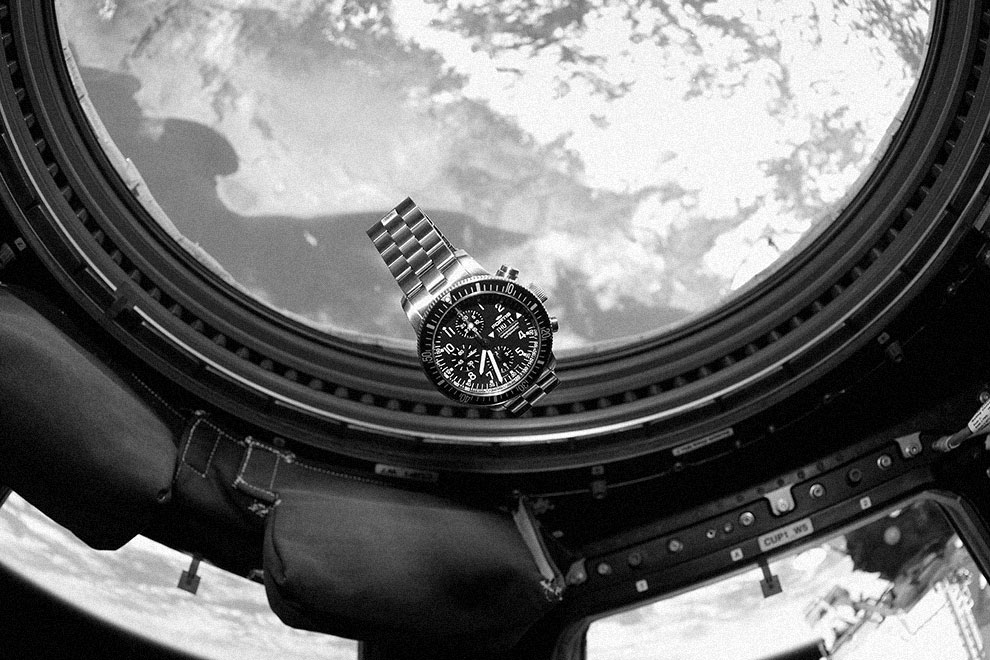
In 2003, the official Cosmonauts Chronograph launched both commercially and literally into space. The partnership between ROSCOSMOS and Fortis was longstanding and only recently ended in 2019.
Present Day
Before celebrating its 25th year in space in 2019, a new lifelong fan of the company took over as CEO. After finding success in other industries, Jupp Phillips bought the company in 2018 with the intention to carry on its legacy.
Fortis continues to pioneer and push the industry’s boundaries even today. Currently, it is the official timekeeping partner of the Austrian Space Forum’s AMADEE Mars Missions.
Moreover, since 2021, Fortis has been working with the Swedish Space Corporation to test its new watches against stratospheric pressures. It was this collaboration that made the recent launch of its new WERK 17 movement into the stratosphere possible.
Our Fortis Recommendations
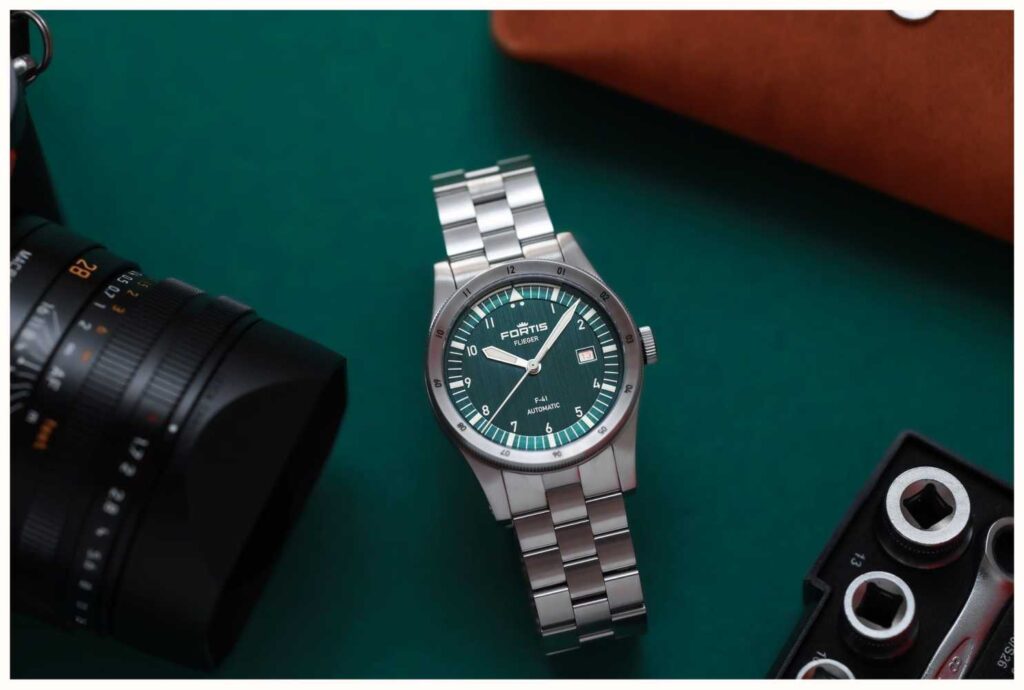
Of course, the best way of introducing Fortis to First Class Watches is to talk about its products. Today, we have picked some of our favourites from each of Fortis’s iconic collections: the Flieger, the Marinemaster, and the Stratoliner.
FORTIS Flieger F-41 Automatic Petrol (41mm) Stainless Steel Block Bracelet F4220021
First up on our recommendations list is our Fortis Flieger pick. “Flieger” is German for “aviator”, and the aviator has certainly been kept in mind throughout the design process of the Flieger watch. In particular, we love this F-41 petrol-green dial model. At its centre, of course, is the stunning metallic petrol dial. Aside from its striking colour, the dial is commendable for its considerate and clean design. For instance, it features the brand’s Brixtrack® and Synchroline® patented design features. Brixtrack refers to the inset luminescent inlays on the outer track of the dial, which are shaped deliberately like ‘bricks’. In this case, highlighting these indices are white Arabic numerals. The Synchroline feature is the added lining above the 11 to 1 o’clock markers. This feature ensures a calibration within +/-5 seconds and aids with watch synchronisation, which is incredibly useful for pilots.
Beautifully complementing the petrol’s cool tone is a 41mm recycled stainless steel case, which seals in 200 metres of water resistance. It is equipped with a 12-hour manual 24-click GMT bezel, which allows for a second time zone display. Upon it, an anti-reflective sapphire crystal encases the dial. Within the case, a UW-30 automatic mechanical movement ticks away and offers 38 hours of power reserve. Additional practical functions on the watch include a date display, Superluminova hour, minute and seconds hands, as well as a screw-down crown with a triple gasket system. Finally, completing the watch is a stainless steel block bracelet.
FORTIS Marinemaster M-44 Chronometer Black Resin Gold (44mm) Horizon Ultra-flexible Rubber Strap F8120015
Next up is the Marinemaster M-44 Chronometer. The name ‘Marinemaster’ may ring some bells, and that’s because Fortis shares the rights to the name with Seiko.
When admiring the M-44, the black anodized O-pattern bezel immediately catches the eye. To contrast it, gold baton indices and three gold hands adorn the dial, all of which feature a luminous inlay. Replacing the three o’clock marker is a date display, which is black in colour to match the dial. Surrounding the dial is a sturdy 44mm case, which is made from recycled stainless steel. Upon it sits a bidirectional gear bezel, which features the Fortis Lock System® for extra protection. Giving the design a luxurious edge, this bezel is made from both recycled stainless steel and 18k gold. Additionally, a high-quality anti-reflective sapphire crystal further attests to the watch’s luxury feel.
This model also boasts an incredible 500 metres of water resistance. In addition to the robustness of the case, this is partly sealed in by the screw-down crown with a triple gasket system. This generous water resistance ensures that the watch’s WERK 11 calibre automatic movement beats reliably. For optimal performance, this calibre boasts a hefty 70-hour power reserve.
Topping off the watch is a black rubber strap. It is embossed with the O-Pattern seen on the dial, which in turn makes the design cohesive. The rubber used in its production is ultra-flexible and the strap itself fastens with a folding clasp in a pin buckle shape.
FORTIS Stratoliner S-41 Automatic White Dust (41mm) Black Leather Aviator Strap F2340014
Our last recommendation of our Introducing Fortis to First Class Watches post is the Fortis Stratoliner S-41 watch. If you were wondering which Fortis watch was thrown into the stratosphere, wonder no more. In 2021, the Foris team attached this S-41 to a gondola which was driven by a stratospheric balloon to outer space. Although very wacky, this move certainly guarantees the watch’s reliability, which is part of the reason we love it.
At the centre of the design is a white dust dial. Upon closer inspection, a finely-grained base structure is visible as a subtle detail. Accompanying the dial are three subdials, a weekday and date aperture, as well as sky blue accents. Additionally, it has three bold central hands and a fine minute track which surrounds the outer circumference of the dial. Another unique feature on the watch is its luminous Space Travel Indicator, which you can read in detail about here.
Housing this design is a 41mm recycled stainless steel case with a flat fixed orbit bezel. Within it is the stratosphere-tested WERK 17 self-winding chronograph movement with a power reserve of 60 hours. Overleaf, a smoked sapphire “spaceship-window” exhibition case back offers the chance to see this movement beat in real-time. To seal in its 200-metre water resistance, there is also a screw-down crown with a triple gasket system. Finishing the design is a sapphire crystal and a sustainable vegetable-tanned leather strap.
We hope that you have enjoyed our post introducing Fortis to First Class Watches! If you’re already a Fortis fan, make sure to check out our other Fortis watches here.

